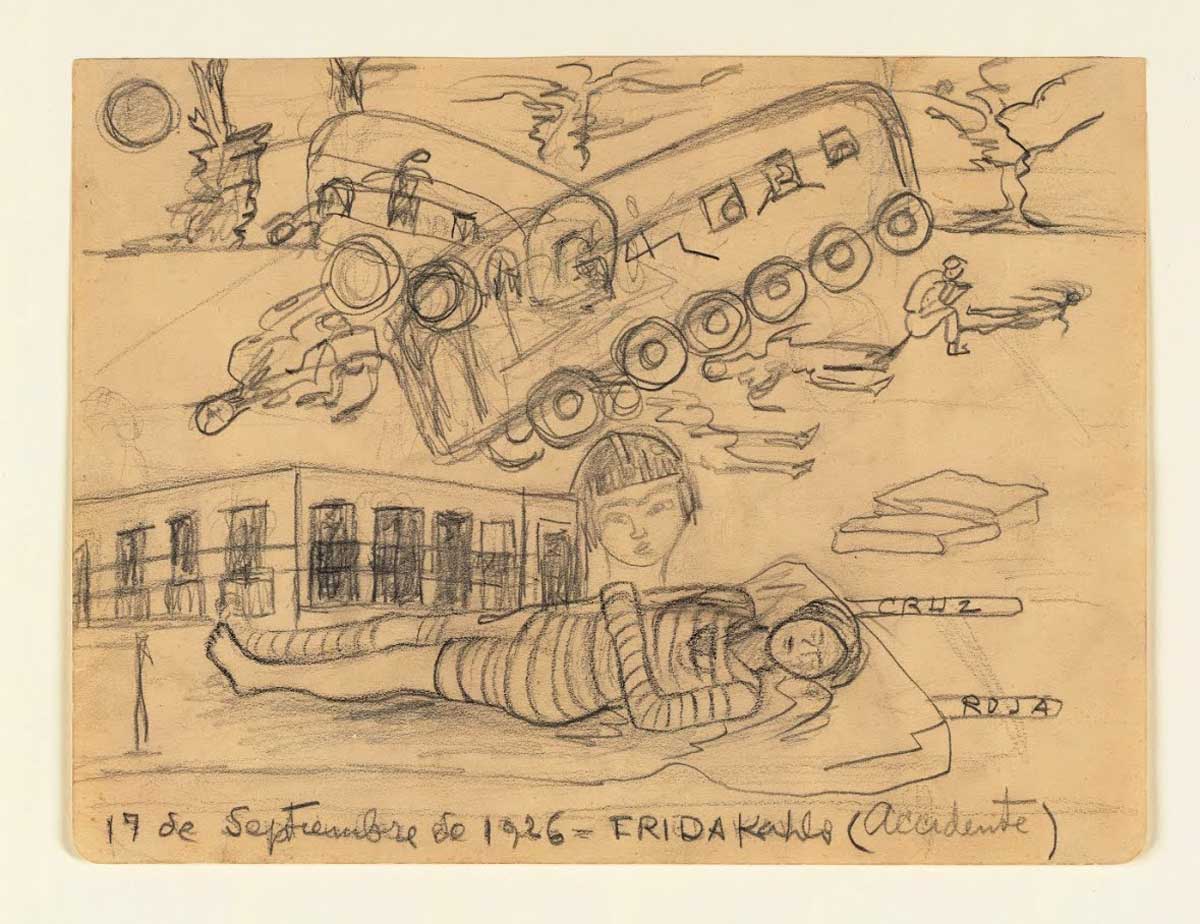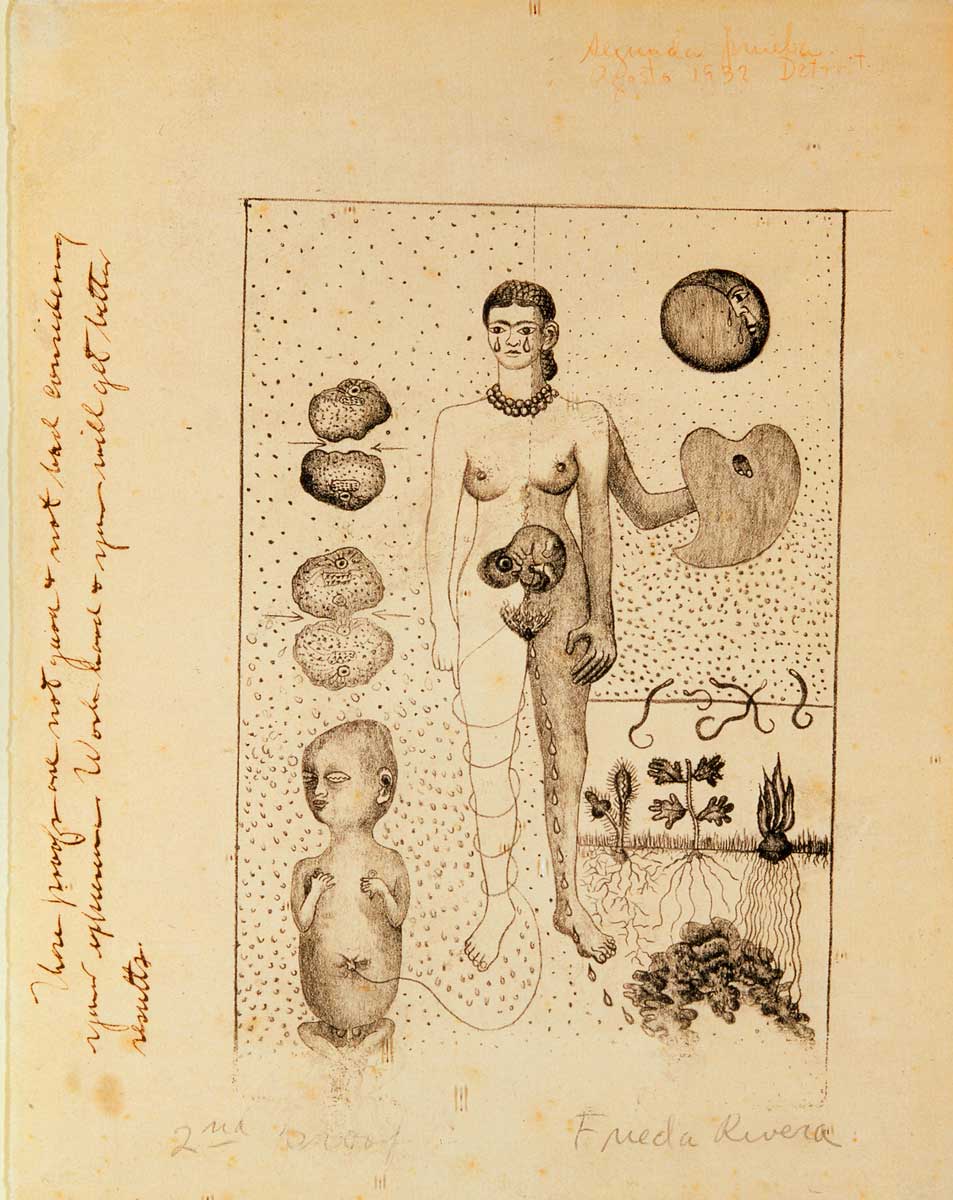
Mexican painter Frida Kahlo, who lived from 1907 to 1954, is known for her self-portraits that draw inspiration from surrealism. Frida was the daughter of a German father and a mestiza mother. She had polio when she was six years old, which left her legs disfigured. The artist was also involved in a major bus accident when she was 18 and spent a lot of time in the hospital because of that. With a mirror hanging in front of her and an easel modified so that she could paint while laying down, Frida started painting her own picture despite being miserable and unable to walk. Read on to learn more about the many faces of Frida.
1. Frida Kahlo: The Face of Tragedy

Frida Kahlo wanted to be a doctor when she was young. On September 17, 1925, however, Kahlo was involved in a terrible bus accident while traveling home from school. The 18-year-old was fortunate enough to live, but her right leg got shattered and her collarbone, ribs, pelvis, and spinal column damaged. Her leg even had to be amputated later in life. After the accident, Kahlo was restricted to months of bed rest in a tight body cast. She also had to go through more than thirty surgical procedures.
Despite being unable to walk and having her hopes of becoming a doctor ruined, Frida started painting portraits of herself. She used a mirror hanging in front of her and an easel modified so that she could work while laying down. In addition to the evident autobiographical components, her paintings also contain a blend of reality and imagination.

Kahlo painted in a style known as naïve folk art to confront issues of postcolonialism, gender, class, and racism in Mexican culture. Mexican culture is frequently said to be the product of both European and Native American cultures, a setting that allowed naïve folk art to thrive. This suited Kahlo’s self-taught style to perfection.
Get the latest articles delivered to your inbox
Sign up to our Free Weekly Newsletter
She depicted the tragic accident that happened to her in a crude and self-reflective way in her early drawing from 1926. Kahlo was looking for a means to take back control, vent her pain, and heal. This new way of expression is reflected in one of her most famous quotes: Feet, what do I need you for when I have wings to fly.
2. Art Therapy: The Face of Pain

When Kahlo married Diego Rivera in 1929 at the age of 22, they moved into the home where she was born known as Casa Azul or the Blue House. Frida became pregnant in 1930. However, the pregnancy ended in a miscarriage. She traveled to America with her spouse that same year. They visited New York, San Francisco, and Detroit.
Several medical professionals concluded that Kahlo was rendered infertile because of the horrific injury that punctured her abdomen and uterus. Her numerous miscarriages and need for abortions provided evidence to support this diagnosis. She remained in America until 1934 and this was an especially prolific period for her. In 1931, she painted Frieda and Diego Rivera.
Frida Kahlo’s experience in Detroit in 1932 would be of special significance, as she saw herself confined to Detroit’s Henry Ford Hospital. After suffering a miscarriage, Frida had to stay at the hospital by herself for two weeks while Diego visited the city to attend his art exhibitions. Kahlo requested medical textbooks from her physicians so that she could see what her unborn child’s fetus might have looked like. When she was refused this kind of access, Rivera gave her a book that she used as an inspiration for Frida and the Miscarriage.

In the work, the artist is seen wielding a heart-shaped palette in her left hand while displaying an anatomical representation of herself, as if she was claiming her position as an artist and investigative doctor who paints from the heart. The fetus is drawn on a much larger scale than Kahlo herself, symbolizing her great anguish of losing another baby. Kahlo painted this image in an effort to rid herself of her sorrow. The drawing clearly conveys a sense of suffering.
This was how Kahlo used the advantages of what is now known as art therapy. British artist Adrian Hill originally used this term in 1942. Through art therapy, creative work might help people develop strong defenses against their tribulations by freeing the creative force of the frequently repressed sufferer. People can express their life stories, ideas, and emotions via art therapy, searching for a voice that grief has silenced.

Kahlo showed the trauma that she was supposed to keep hidden in Henry Ford Hospital. Not only was talking about miscarriages a taboo at the time but it was also considered shameful in Mexican society. Kahlo, on the other hand, publicly discussed her experience and described her emotional and physical suffering.
3. The Face of Heartbreak

Kahlo and Rivera went back to Mexico in 1934. Returning home was hard for Kahlo since Diego was far from the husband she needed, which pushed her even further into painting with a vengeance. Rivera was 20 years older than her, and the heartbreak he inflicted upon her, went to cause no short amount of emotional and psychological damage.
Kahlo once said: I have suffered two serious accidents in my life. One was when a bus crushed my body. The second is Diego. The pair looked at each other for inspiration and provided one another with a lot of creative encouragement, but their relationship was strained. Both lovers had several extramarital romances and Rivera even dated Kahlo’s sister Cristina. The couple separated in 1939, and before they got married again the following year, Kahlo painted The Two Fridas, in which two figurative representations of herself sat next to each other on a bench.

In addition to expressing Kahlo’s perception of a split cultural identity, particularly because of her parents’ separate nationalities, this twin portrait also shows that she tore herself apart into two different women to express her pain. The two autonomous ladies in the portrait are comforting one another and sharing their emotional suffering by holding hands.
4. The Face of Isolation

One of Kahlo’s most famous paintings called The Broken Column was made in 1944. She created it soon after having her spinal surgery. Here, Kahlo represents her strong sense of loneliness. While she was alluding to her physical confinement, Kahlo also felt profound psychological isolation from the outside world as she was bedridden. Several complicated mental health conditions contributed to her state.
Kahlo began to write, doodle, and paint in her personal diary. The journal’s entries, which she never intended to publish, are now just as well-known as Frida herself. These show feelings of rage, frustration, and despair.

It was painfully obvious from these pages and from Kahlo’s several suicide attempts that she struggled with despair, drug addiction, and low self-esteem. Frida had ongoing medical attention for her numerous physical health issues, but not for her mental health problems. This was another sensitive topic she had to deal with alone, as it was also taboo at the time.
5. The Face of Truth

Kahlo’s stern self-portraits and photographs, in which she never smiles, expose the truth behind her confident façade. People see Kahlo’s pristine paintings, which convey a notion of maintaining appearances. Yet, what can now be read in her journal, where we finally discover Kahlo’s actual sense of self, stands in sharp contrast to that. We see what she didn’t want anyone else to see—a vulnerable human being who could not allow herself to show weakness. In this regard, Kahlo’s vibrant attire may also be understood as a self-medication that she used to distract others from her physical limitations.
Kahlo’s clothing was unconventional, colorful, and symbolic, just like her paintings. She wore vibrant lengthy skirts, chunky jewelry, and floral headpieces. Kahlo’s exuberant Mexico-inspired attire made her easily recognizable anywhere in the world.
Frida purposefully merged styles from the West and Mexico, reflecting her mixed ancestry. She produced a highly distinct political and cultural identity using fashion that was filled with the same dualism seen in her paintings. She expressed both her nationalism and her feminist leanings as well as her respect for tradition.

Once Kahlo passed away, her image entered pop culture and sparked Fridamania, but the political and feminist ideals that were so important to her identity were largely lost. Few people understood the underlying significance behind her fashion choices. What is fascinating about Fridamania though, is how so many clothing outlets and shops have brought back modern pieces that immortalize Kahlo as a fashion icon. There are endless items with Kahlo’s eternal face on them ready to be purchased and worn by both fans of work and people who simply like this aesthetic regardless of its meaning.
Frida Kahlo, In Conclusion…

Kahlo’s art is autobiographical. Her paintings serve as a reflection of the artist’s thoughts and feelings. Frida’s private life must be brought up when discussing and analyzing her art. She challenged the widely accepted, hackneyed narrative of women’s insanity, which has long been portrayed by men in art. Several other female artists with mental health illnesses have followed in Frida’s footsteps and utilized their work as a cathartic outlet for rehabilitation.
Because of her distinctive personality and varied life, Frida became a public icon. She represents women’s inner strength, love of Mexico and its culture, and bravery in the face of tragedy. Frida has inspired people around the world not to be ashamed of exploring and showing their pain. She is a staple of art, an inspiration for every generation, a voice for silenced women, and a hero who will live on in the artworks that bear the essence of her very soul.








